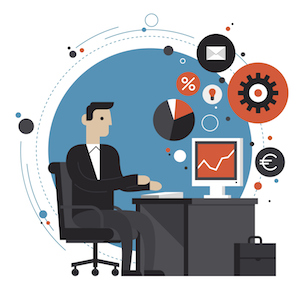 If you aren’t incorporating Big Data into your email strategy this year, it’s high time to get started. According to ExactTarget’s 2014 State of Marketing survey, collecting, measuring and using behavior-based data is one of the top three most common priorities in the email industry. Sixty-one percent of marketers say they will increase their spend on data and analytics in 2014 alone.
If you aren’t incorporating Big Data into your email strategy this year, it’s high time to get started. According to ExactTarget’s 2014 State of Marketing survey, collecting, measuring and using behavior-based data is one of the top three most common priorities in the email industry. Sixty-one percent of marketers say they will increase their spend on data and analytics in 2014 alone.
But why is Big Data such a big deal for email marketers? “More data enables marketers to build better 1:1 customer experiences and cut through the communication clutter,” ExactTarget explains, “so it’s now more important than ever to have a plan and process around collecting that data.”
But therein lies the challenge: It’s not always easy to get the data you need. A 2012 study conducted by MIT Sloan Management Review and SAS Institute found that only 35 percent of business leaders felt they always or frequently had access to the data they need to make decisions. Furthermore, a 2013 study from the Economist Intelligence Unit found that only 24 percent of marketing executives are actually using this data for actionable insights.
Obviously, collecting and leveraging the right data is not as simple as it sounds. To help you get a head start on your data-driven marketing, here are four tips for a big data strategy that will boost your personalization tactics and drive higher results.
1. Ask the Right Questions
A solid big data strategy begins with a goal. A recent McKinsey report suggests asking a question: “What decisions could we make if we had all the information we need?” Pinpoint the specific problem you need your data to solve so that you can focus on the heart of the matter.
For example, if one of your goals is to drive conversions, think about your funnel process. How long do subscribers stay in each stage? What moves them to the next stage? At what point do they drop out of the funnel completely? Let your questions lead you to the data you need.
2. Fill Your Data Gaps Resourcefully
If you have access to internal data, thumbs up! In many organizations, however, data will come from looking at outside sources, such as social media, published reports from industry experts and data services like email intelligence, email validation and email append.
One challenge this complicated data aggregation creates is a lack of integration across your organization. Data stuck in different lists and siloes prevents marketers from capturing a unified view of the customer. Keep proactive cross-pollination policies in mind to help everyone better understand what can be done with the data.
3. Build your Analytics Capabilities
To be successful, marketers must be digitally savvy. In fact, according to the Economist study, analytics ability is now seen as the most necessary skill for modern marketers. Anna Russel of Australian analytics firm Polynomial describes this as a shift from “decision making” to “decision science.” She explains, “Business leaders need to develop the skills to translate and operationalize data-driven insights within their organizations.” Yet despite this growing focus, business leaders often fail to understand or trust Big Data and, subsequently, don’t use it.
As such, it’s critical to build a data science team-even if it’s just one person-that can guide you through the data and help ensure analytics become part of the fabric of your daily operations.
4. Look Deeply at Customer Engagement & Get Creative
Using your data, map the entire customer journey so you can understand how your customers engage. This insight should highlight opportunities to improve the experience at every touch point. And don’t stop at the surface. Your customers can tell: According to the Economist study, as much as 33 percent of consumers cite superficial personalization as one of their top annoyances.
Personalization these days requires more than simply adding “Dear John” to the start of your emails. To truly engage, create hyper-targeted content that speaks not just to loosely defined buyer personas but to specific customer segments such as “customers who ride bicycles” or “customers who attended our last webinar.” Use your data to drive personalized promotions, much in the same way that Amazon’s platform instantly suggests “Products You Might Like” based on your unique buying history.
One interesting way to incorporate this into your strategy is to use data to identify and retain customers one their way out the door. T-Mobile recently developed a data integration platform that captures billing data, social media information and web logs in order to predict which customers are on the verge of cancelling. As a result, T-Mobile was able to cut customer defections in half in just one quarter.
However you choose to implement your personalization strategy, it’s important you focus on turning the dials that are most impactful. Use your data to find the best way to deliver high-quality, highly personalized messages and wait for the results. After all, with big data, it’s not about the hype; it’s about developing the best solution to achieve your goals.
Want to learn more about your customers? Contact us today for a free email intelligence test to see how TowerData can help maximize the value of your list!
 Affiliate Marketing
Affiliate Marketing Automotive
Automotive eCommerce and Retail
eCommerce and Retail FinTech
FinTech LeadGen
LeadGen Nonprofit and Political
Nonprofit and Political Payments
Payments Technology Platforms
Technology Platforms Tourism and Hospitality
Tourism and Hospitality
 If you aren’t incorporating Big Data into your email strategy this year, it’s high time to get started. According to ExactTarget’s
If you aren’t incorporating Big Data into your email strategy this year, it’s high time to get started. According to ExactTarget’s 